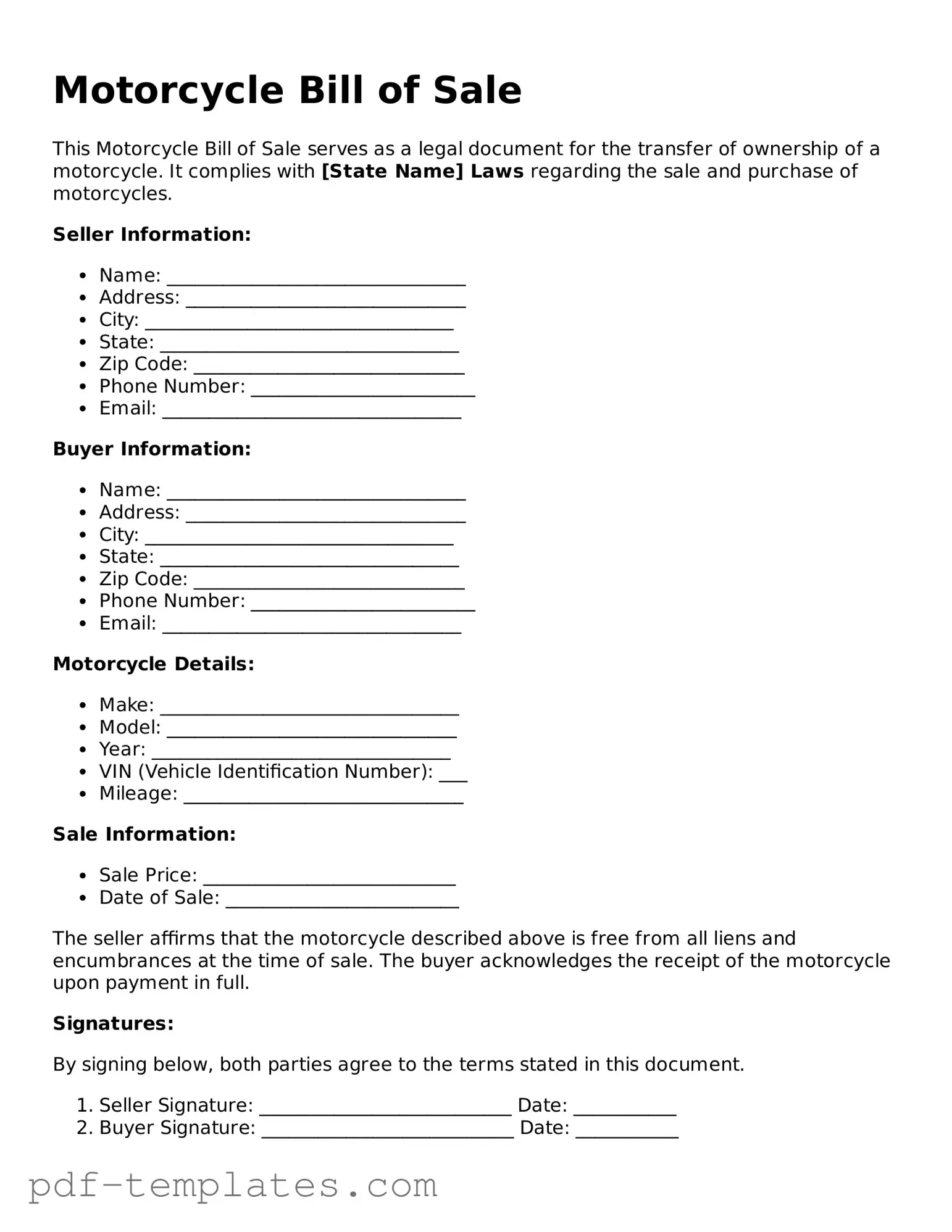The Motorcycle Bill of Sale is similar to a Car Bill of Sale. Both documents serve as proof of ownership transfer for a vehicle. When someone sells or buys a motorcycle, just like with a car, the bill of sale details the transaction, including the purchase price, vehicle identification number (VIN), and the names of both the buyer and seller. This document can be crucial for registering the vehicle with the state and for tax purposes.
Another document akin to the Motorcycle Bill of Sale is the Boat Bill of Sale. Just as with motorcycles and cars, boats require a formal document to transfer ownership. This document includes similar information, such as the boat's hull identification number, the names of the parties involved, and the sale price. Both documents protect the interests of the buyer and seller and provide a record of the transaction.
In addition to these various forms of ownership transfer, it is important for California residents to be aware of the California Earthquake Authority form as it plays a crucial role in securing earthquake insurance coverage. This form necessitates detailed applicant information and coverage preferences, ensuring that homeowners and renters are prepared for potential seismic events. For comprehensive information and resources, you can access All California Forms that help streamline various processes, including insurance applications.
The ATV Bill of Sale also shares similarities with the Motorcycle Bill of Sale. All-terrain vehicles (ATVs) are often bought and sold in private transactions, necessitating a bill of sale to document the exchange. This document typically includes details about the ATV, including its make, model, and VIN, as well as the identities of the buyer and seller. This ensures that both parties have a clear understanding of the terms of the sale.
A Snowmobile Bill of Sale is another document that parallels the Motorcycle Bill of Sale. Snowmobiles, like motorcycles, require a formal agreement to transfer ownership. The bill of sale for a snowmobile will include essential details such as the snowmobile's VIN, the sale price, and the names of the parties involved. This document is crucial for registration and can help prevent disputes about ownership.
The Trailer Bill of Sale is also comparable to the Motorcycle Bill of Sale. Trailers, often used for transporting motorcycles and other vehicles, require a bill of sale for ownership transfer. This document outlines the trailer's specifications, including its VIN, and captures the sale details. Just like with motorcycles, having a bill of sale helps ensure that the transaction is legally recognized.
The Mobile Home Bill of Sale shares similarities with the Motorcycle Bill of Sale as well. When someone buys or sells a mobile home, a bill of sale is necessary to document the transaction. This document includes information about the mobile home, such as its serial number, and the names of the buyer and seller. It serves as proof of ownership transfer and is often required for registration purposes.
Lastly, the Firearm Bill of Sale is another document that resembles the Motorcycle Bill of Sale. When firearms are bought or sold, a bill of sale is often used to formally record the transaction. This document includes details about the firearm, such as its make, model, and serial number, along with the identities of the buyer and seller. Like the motorcycle bill of sale, it provides legal protection for both parties involved in the transaction.
